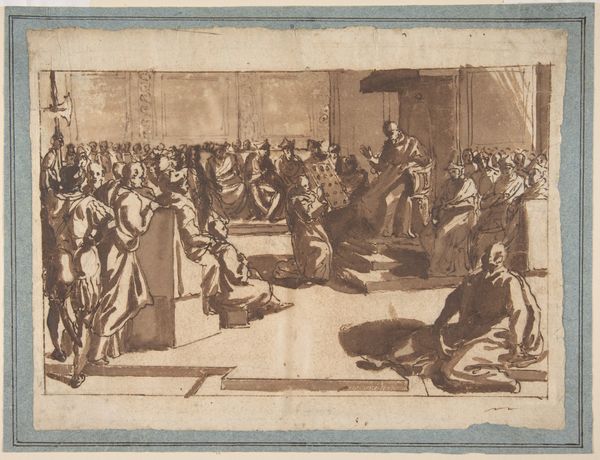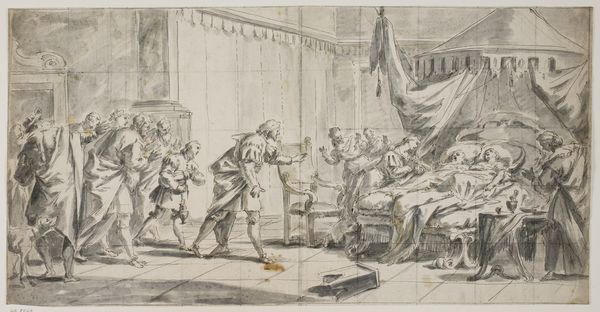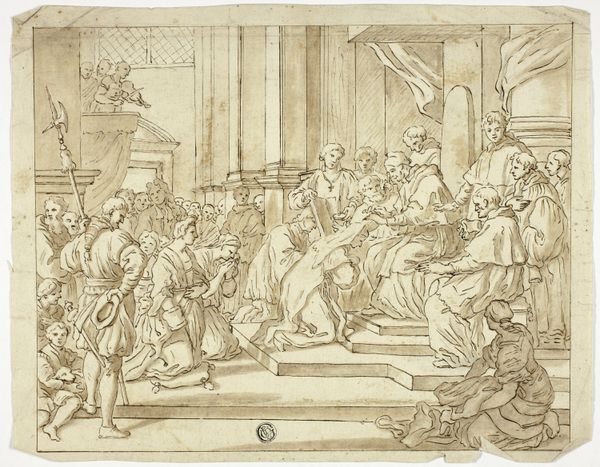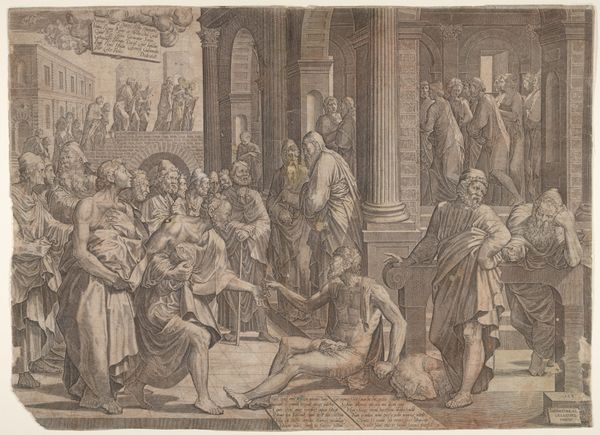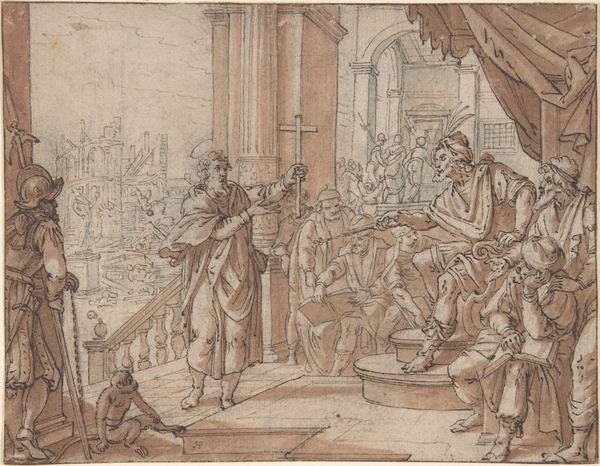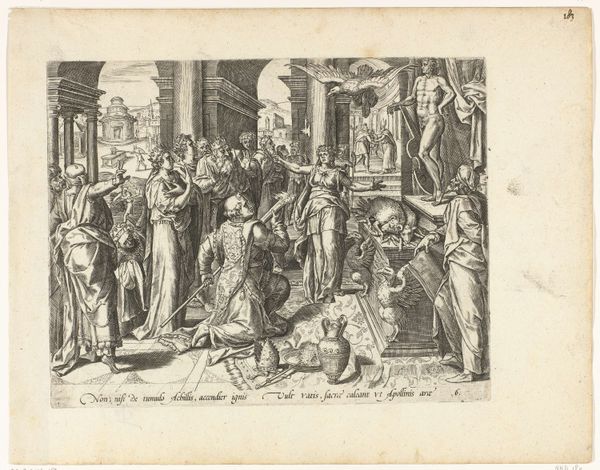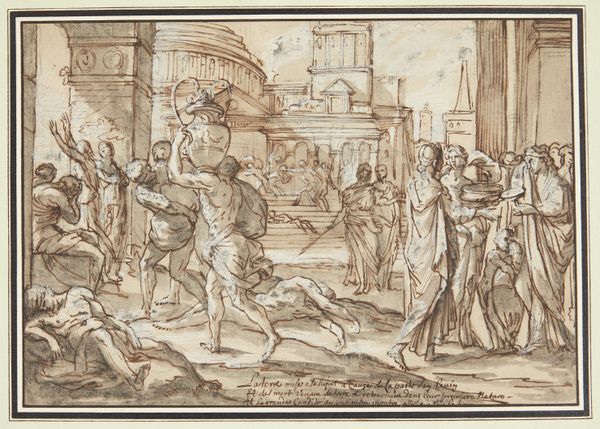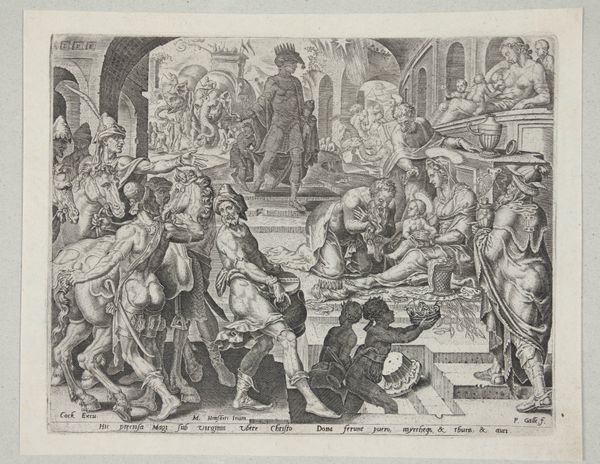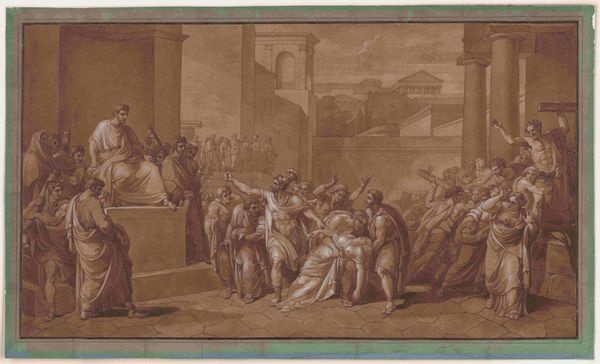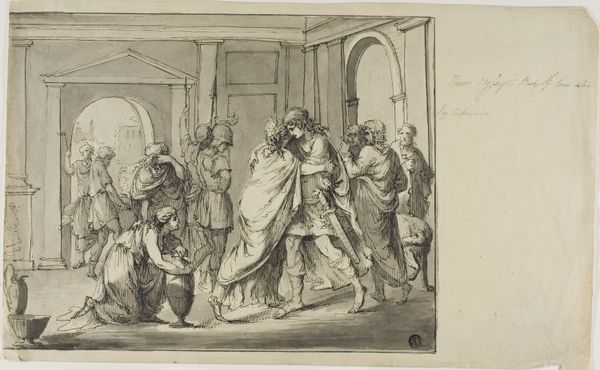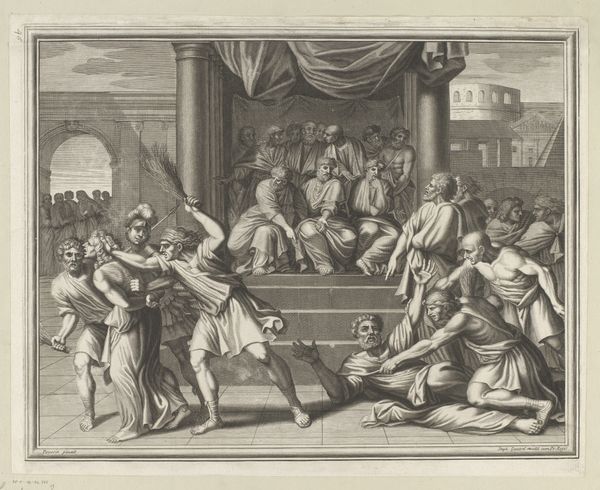
Martyrium des heiligen Jacobus des Jüngeren_ Der Heilige wird von einer Volksmenge gesteinigt und mit dem Walkerholz erschlagen
0:00
0:00
drawing, paper, ink
#
drawing
#
narrative-art
#
baroque
#
figuration
#
paper
#
ink
#
history-painting
Copyright: Public Domain
Curator: What we have here is a drawing rendered in ink on paper; the Städel Museum holds it, attributing the piece titled "Martyrdom of St. James the Less: The Saint is Stoned by a Crowd and Beaten with a Fuller's Club" to Conrad Meyer. Editor: Woah, that's intense! My first thought? A scene ripped from a nightmare. The frantic energy, the monochromatic palette... it's brutal and captivating, like witnessing a riot distilled onto a page. Curator: Indeed. Notice how Meyer uses the architecture as a backdrop, contrasting the rational lines of the building with the chaotic brutality of the execution. This visual dissonance creates a powerful symbolic effect. Editor: Absolutely. It's almost like the 'civilized' world is passively watching this act of barbarism. And the mob! They’re a swirling mass of faces and limbs, wielding stones and that huge, bizarre mallet. The gesture on that object, it seems incredibly visceral. I can almost feel the impact. And the small dog looks equally frightened. Curator: The choice of instruments of martyrdom carries considerable weight. Stones symbolize a collective judgment, an impersonal act of violence carried out by the entire community. Whereas the fuller’s club… it’s more intimate, a directed force of personal aggression. Editor: It's the juxtaposition that really gets me, this casual cruelty next to… well, formality. Did Meyer have specific intent when capturing the horror, something that resonates deeper? Curator: Meyer's image reflects not only the religious narrative, but also the historical anxieties of his time. The Baroque era, despite its splendor, was an age of intense religious and political conflict, of stark class division. Scenes of martyrdom were popular. They represented the power of faith to resist oppressive forces. The violence almost becomes an act of defiance, the faith that strengthens through and beyond this public killing. Editor: Wow, when you frame it like that, it’s not just a depiction of suffering. There’s something almost… celebratory in its intensity, like a defiant howl in the face of injustice. This wasn’t just a drawing of an execution; it's a time capsule of the time period itself. Curator: Precisely. An insight that provides an historical anchor point for considering such violent social displays. Editor: Thanks for that Curator, I am walking away now thinking so differently about how violence has been portrayed.
Comments
No comments
Be the first to comment and join the conversation on the ultimate creative platform.
